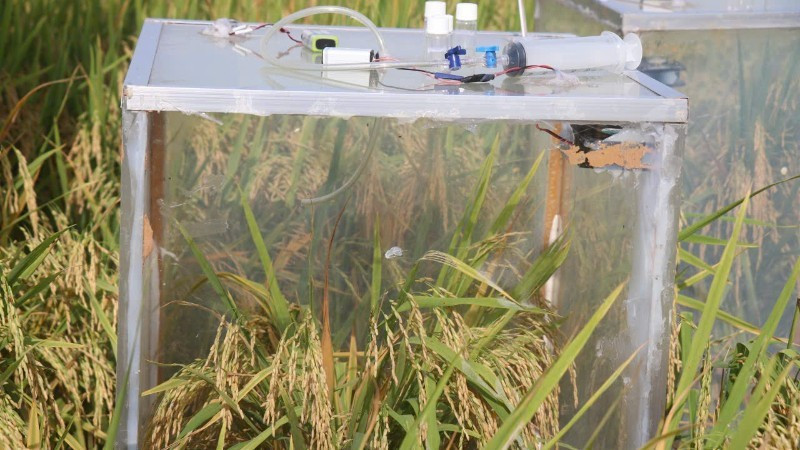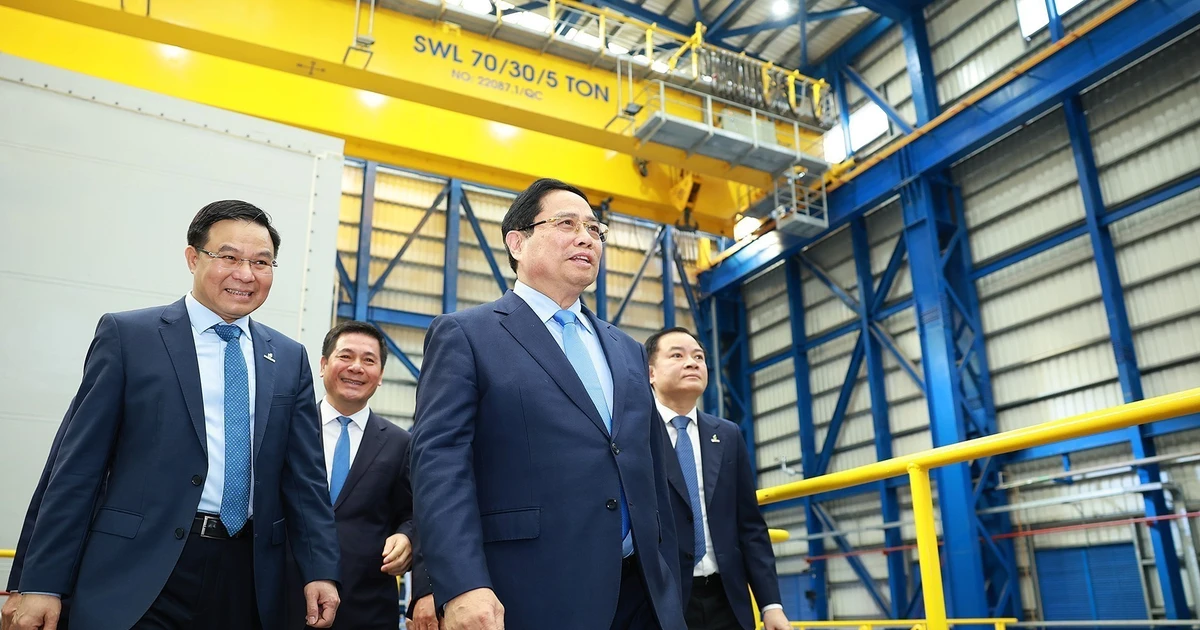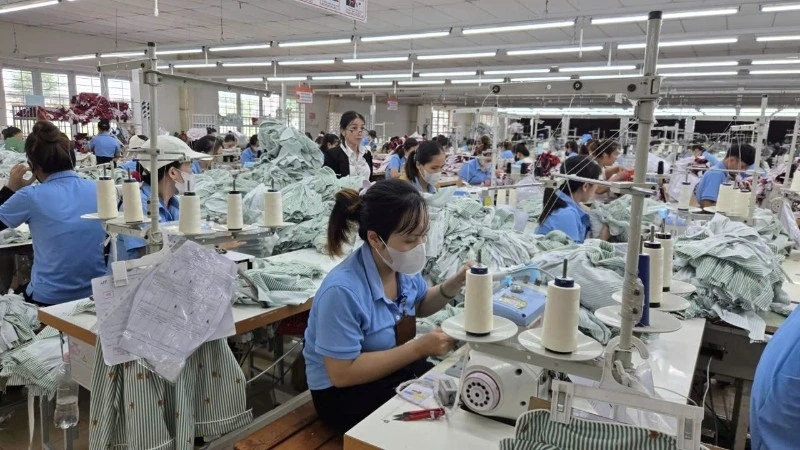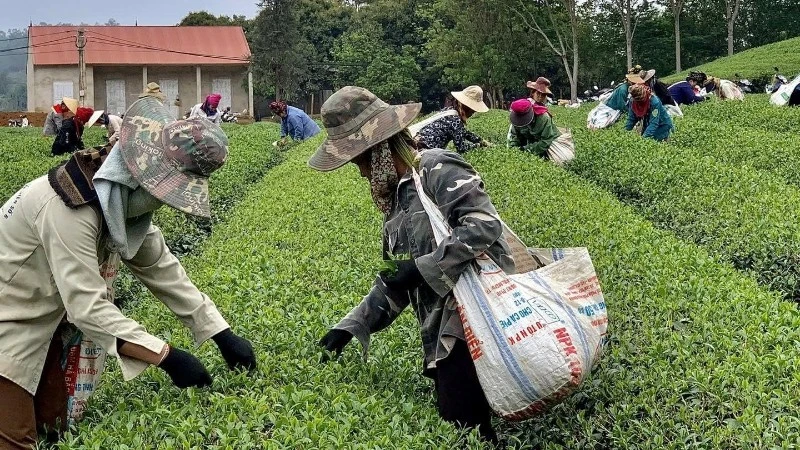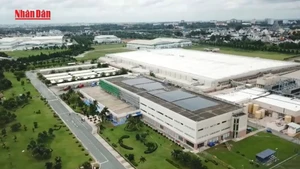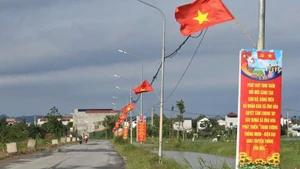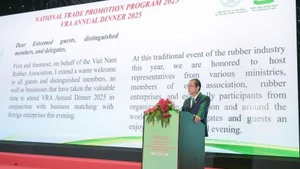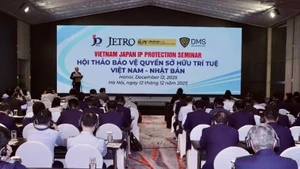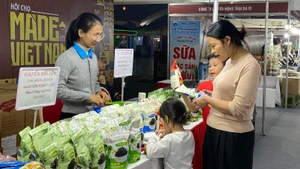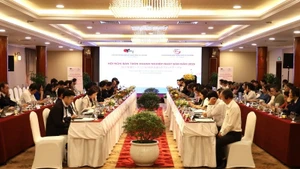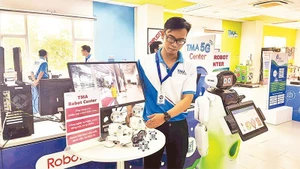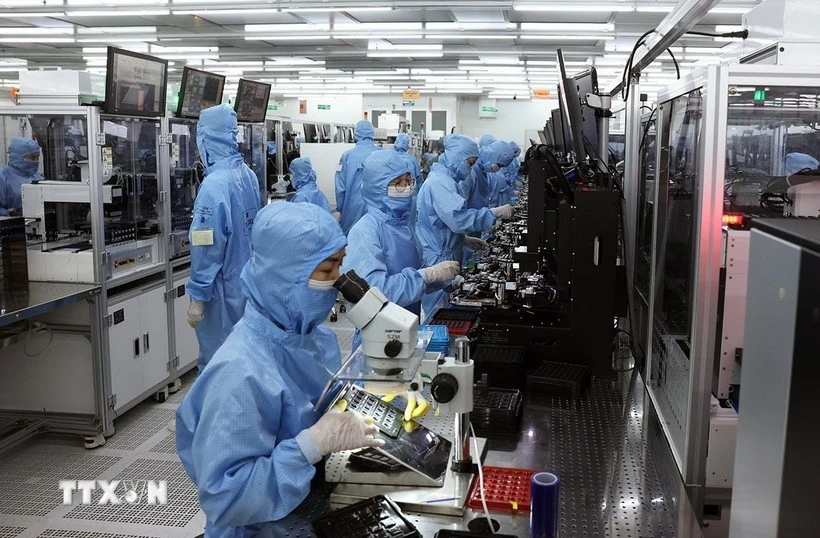Since 2024, the Mekong River Delta has implemented more than 354,000 hectares of specialised high-quality, low-emission rice cultivation linked with green growth. Evaluations show that production in these specialised areas has helped reduce seed density, fertiliser use, pesticides, and irrigation water, thereby improving both yield and rice quality. These successes have been achieved thanks to the application of advanced technologies in production, notably the MRV (Measurement, Reporting, and Verification) process.
According to the Institute of Agricultural Environment (Viet Nam Academy of Agricultural Sciences), the goal of applying the MRV process in high-quality, low-emission rice cultivation is to quantify emission reductions under the one million hectares low-emission rice programme.
The core of this process is to promote a shift in production methods and improve the efficiency of resource use by optimising fertiliser and water management through techniques such as row seeding, clustered seeding, deep placement of slow-release fertiliser, and smart water management. As a result, fertiliser, seed, and water inputs are reduced while the economic value of rice increases.
Additionally, advanced and sustainable rice cultivation practices that protect the environment are widely adopted. Training courses, workshops, and technology transfers are conducted to enhance the management capacity of agricultural officers and farmers in producing high-quality, low-emission rice following the MRV process.
Evaluating the MRV implementation under the Project, Mai Van Trinh, Director of the Institute of Agricultural Environment, stated that the models could reduce emissions by 3.7 to 4.6 tonnes of CO₂e per hectare per crop, and that staff have mastered MRV-related activities.
During the 2024–2025 winter–spring crop and the 2025 summer–autumn crop, the VINACAM Hon Dat Agricultural Cooperative in An Giang Province implemented a pilot model under the national agricultural extension project, covering 50 hectares with the participation of 10 households.
VINACAM Hon Dat Agricultural Cooperative in An Giang Province
To contribute to the Project’s implementation, the National Agricultural Extension Centre launched a project to build low-emission rice cultivation models aimed at sustainable development of rice production areas for export in the Mekong River Delta. The project, led by Binh Dien Fertiliser Joint Stock Company, is being carried out during the 2024–2025 period.
The project includes 12 models in provinces such as Dong Thap, An Giang, Can Tho, and Vinh Long (before the merger), with a total area of 600 hectares across two crops (2024–2025 winter–spring and 2025 summer–autumn). Results show that in the winter–spring crop, yields ranged from 6.87 to 10.28 tonnes of fresh paddy per hectare, an average increase of 1.94 tonnes/ha.
For the summer–autumn crop, yields ranged from 6.2 to 8.85 tonnes/ha. Average profits in the winter–spring crop reached over 38.5 million VND (1,463 USD)/ha, up 19% compared with control fields, while summer–autumn profits averaged over 25 million VND (950 USD)/ha, up 26%.
Notably, through successful implementation of alternate wetting and drying irrigation—draining the field two to four times per crop—farmers experienced fewer pest and disease outbreaks. Across both crops, greenhouse gas emissions decreased by an average of 10 tonnes CO₂ per hectare. Farmers were also encouraged to remove straw from the fields after harvest to use as livestock feed or compost, a practice that has been effectively implemented.
The VINACAM Hon Dat Agricultural Cooperative in An Giang Province reported that, as this was the cooperative’s first pilot model applying the rice cultivation process aligned with the Project, participating members were carefully selected for their dedication and ability to meet production conditions.
After two crop cycles, the cooperative recorded reductions in seed usage, balanced fertiliser application, pesticide use following the “four rights” principle, and effective water management. Consequently, rice grew better with fewer pests and diseases, leading to lower production costs, higher yields, and increased profits.
The cooperative also signed a contract with enterprises to purchase rice meeting export standards, resulting in prices 300 VND/kg higher than the market. On average, profits across the two crops were about 7 million VND (266 USD)/ha higher than traditional farming.
According to the An Giang Provincial Agricultural Extension Centre, despite advantages in area and output, local rice production still faces challenges such as overuse of nitrogen fertiliser causing NO₂ emissions, straw burning producing CO₂, and burying straw under flooded conditions generating CH₄ emissions.
An Giang Province aims to develop 352,787 hectares of high-quality, low-emission rice cultivation areas linked with green growth by 2030.
Evaluations indicate that production costs in the model areas were reduced by over 1.8 million VND (68 USD)/ha, while economic efficiency increased by 6.6 million VND (250 USD)/ha—37% higher than non-model areas. Emission reductions ranged from 37.22% to 52.77%. Particularly, 100% mechanisation was applied in seeding, cultivation, and harvesting.
At a recent seminar on the application of technologies in managing high-quality, low-emission rice cultivation in the Mekong River Delta, held in Can Tho City, participants suggested that cooperatives should encourage members to expand cultivation areas, continue effective water management, and maintain detailed farming logs. Scientists were also urged to research straw treatment solutions to improve post-harvest collection.
Moreover, participants emphasised the need for investment policies to support agricultural mechanisation, encouraging farmers to adopt comprehensive production processes. Businesses were encouraged to strengthen their participation in the production–consumption value chain and to offer higher purchase prices for rice produced under low-emission processes compared with traditional cultivation.
Deputy Director of the National Agricultural Extension Centre Huynh Kim Dinh stated that localities should continue expanding alternate wetting and drying irrigation models, accelerating digital transformation in agricultural management, and reinforcing value chain linkages between farmers, cooperatives, and enterprises. This approach would help establish sustainable production areas that meet export rice standards.
